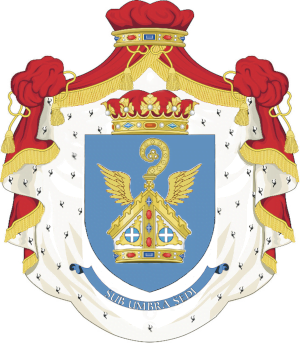Following the notarial deed in Paris, the King, His Majesty Victor Amadeus II of Savoy instructed to take possession of the territories of the Principality of Sabourg.
An entire legion of the Savoy army went to the village of Seborga.
When the Savoy took possession, with ‘ample freedom of metedo’, to justify the employment of a legion, which could guarantee a hypothetical conflict with the Genoese, as was provided for in the deed of sale by the lawyer Francesco Lea, royal delegate of the House of Savoy, the remaining sum of 132. 000 lire of Savoy currency, was to be received, through the Fathers of Lerino, by the Republic of Genoa, as ordered by the Supreme Pontiff Benedict XIII and his delegate for the payment of the debts previously contracted by the monks.
Although they knew that this balance of money would never be received or even regularised, since the Republic of Genoa had exerted innumerable pressures on the Holy See to obtain prior authorisation for the alienation of the territories of the Principality of Sabourg, the Savoy took possession of the two Priories and the adjoining territories, in agreement with the monks at the time of the signing of the notarial deed in Paris on 30th January 1729.
An actual taking of possession was organised with an official oath by the Consuls and Mayors of Sabourg and all the subjects, in particular those of the village of Seborga, in the presence of the Savoy garrison.
The monks of Lerino definitively left the territories of the Principality of Sabourg by 1730.
Thanks to their purchase, the Savoy continued their occupation, considered illegitimate by the Genoese.
Several brogliacci are kept in the Turin State Archives, but they do not prove the actual payment of the debts, through the settlement of the 132,000 lire of Savoy currency to the Republic of Genoa, due to the absence of a recorded receipt from the republic.
It appears from a deed drawn up and transcribed by Charles Franchi, the King’s archivist, dated 10 August 1797, a guarantee of payment that the lawyer Francesco Lea gave to Father Benoit on the day of the sale in the amount of 186,000 lire of Savoy currency.
This guarantee, it appears from the deed, was to take effect in the event that the remaining 132,000 lire of Savoy currency were not paid.
No information about this payment guarantee to be returned at the time of the actual territorial occupation by the Savoy of the Principality of Sabourg appears to have actually existed, nor is it mentioned in the original deed of sale. So it is safe to assume that the King of Sardinia had it drawn up to avoid further disputes with the Republic of Genoa, passing all responsibility onto the Fathers of Lerino.
The Republic of Genoa, evidently unaware of the situation that the Savoy had created thanks to the complicity of the Monks of Lerino, the tacit assent of the Archbishop of Embrun and probably also due to the disinterest of the Supreme Pontiff, following the deed, applied pressure on the Holy See to expel the Savoy from Seborga.
As a result of the numerous pressures, Pope Benedict XIV, was forced in 1748 (presumed date) to regularise the Savoy occupation by issuing a Papal Bull (Bulla Pontificalis) sanctioning the Savoy Protectorate of the territories of the Principality of Sabourg. This document is presumed to be kept in the Secret Archives of the Holy See (source was Don Antonio Allaria Olivieri).
Clear proof of this statement can be seen every day in the municipality of Seborga, through the statue erected by the citizens of Seborga to King Umberto I, dated 20 September 1920, in which is inscribed the textual quotation: Seborga over the centuries faithful to the Protecting Dynasty.
The territories of the Principality of Sabuorg were annexed to the domain of the Savoys on 30 January 1729, but they did not have the right to bear the title of Prince, which could only be assumed by a clergyman. This is why the statue erected on 20 September 1920 bears the following inscription: Seborga… and not, for example,: the subjects of the Principality…
Seborga was administered by the Savoys until 1946 and after the advent of the Republic it became, de facto, annexed to the Italian State.
This is why today the territories of the Priory of Sabourg and the Priory of the Chaplaincy of San Michele are counted as Italian territory.


